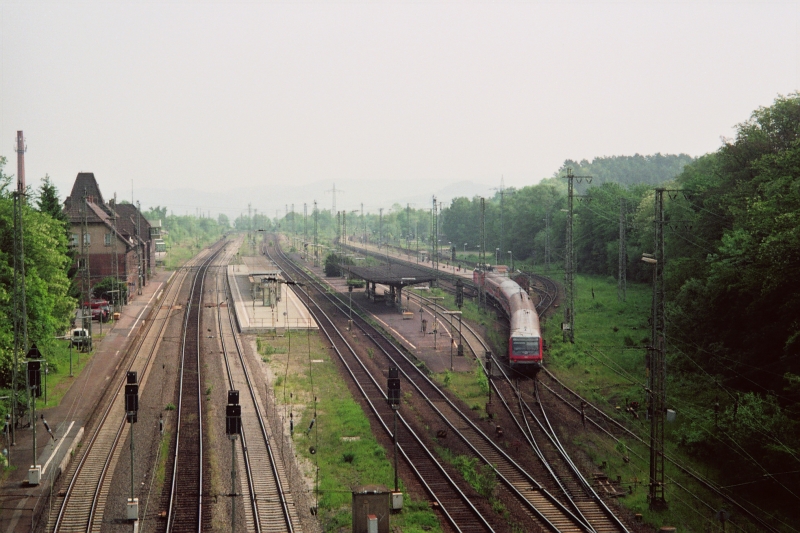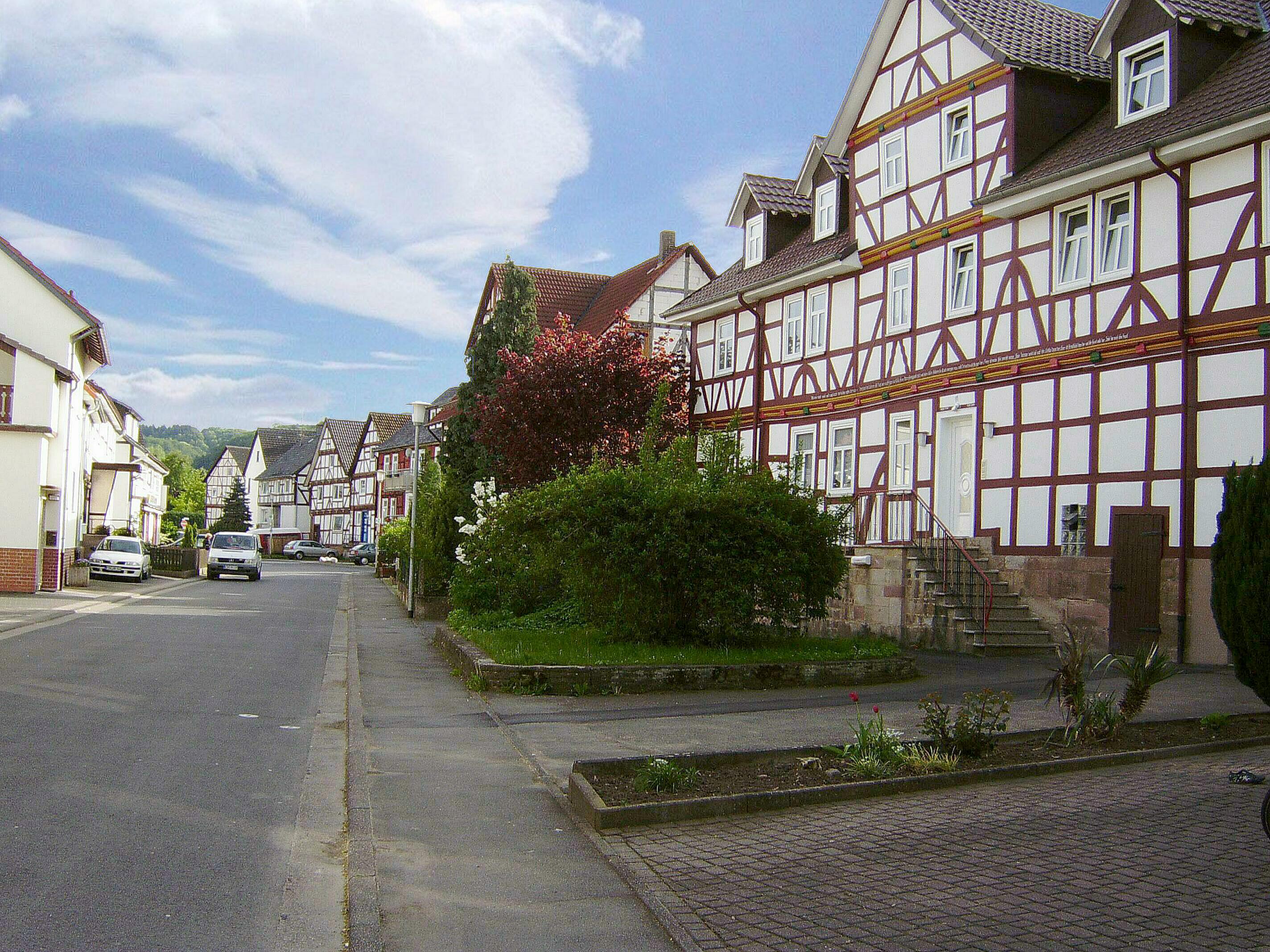|
Neu-Eichenberg
Neu-Eichenberg is a municipality in the Werra-Meißner-Kreis in Hesse, Germany. Geography Location Neu-Eichenberg lies near the three-state common point shared by Hesse, Thuringia and Lower Saxony between Kassel (45 km) and Göttingen (12 km). Neighbouring communities Neu-Eichenberg borders in the north on the community of Friedland (in Lower Saxony’s Göttingen district), in the east on the communities of Hohengandern and Bornhagen (both in Thuringia’s Eichsfeld district) and in the south and west on the town of Witzenhausen (Werra-Meißner-Kreis). Constituent communities Neu-Eichenberg is made up of seven places named Berge, Neuenrode, Eichenberg Bahnhof, Eichenberg Dorf, Hebenshausen (administrative seat), Hermannrode and Marzhausen, but its five '' Ortsteile'' are Berge (Berge and Neuenrode), Eichenberg (Bahnhof and Dorf), Hebenshausen, Hermannrode and Marzhausen. History The community of Neu-Eichenberg came into being in the course of municipal reform ... [...More Info...] [...Related Items...] OR: [Wikipedia] [Google] [Baidu] |
Eichenberg Station
Eichenberg station is the only station in the municipality of Neu-Eichenberg in the German state of Hesse. It is located in the hamlet of Eichenberg-Bahnhof, which lies east of and on the other side of federal highway B 27 to the historic village of Eichenberg. History Eichenberg station originated with the opening of the Arenshausen– Hann. Münden section of the Halle–Kassel line in 1869. In 1876, the Niederhone–Eichenberg–Friedland section of the Bebra–Göttingen railway was completed. Thus Eichenberg became a railway junction. Substantial inclines had to be overcome on the Eichenberg side of the watershed between the Fulda and the Werra rivers at Cornberg and between the Werra and the Leine, requiring four tunnels and very curvy track. On 15 December 1915, the 25 km long Gelster Valley Railway was opened from Velmeden via Großalmerode Ost to Eichenberg. In freight transport, it primarily served the transport of lignite from the northern Hessian coal min ... [...More Info...] [...Related Items...] OR: [Wikipedia] [Google] [Baidu] |
Witzenhausen
Witzenhausen is a small town in the Werra-Meißner-Kreis in northeastern Hesse, Germany. It was granted town rights in 1225, and until 1974, it was a district seat. The University of Kassel maintains a satellite campus in Witzenhausen at which is offered the ecological agricultural sciences programme, which is unique in the country. This also puts Witzenhausen among Germany's smallest university towns. Furthermore, a teaching institute (DEULA) for environment and technology, agriculture, horticulture and landscaping. The town is also nationally known for the invention of the ''Biotonne'' – a biological refuse container – in 1983, and as an important cherry-growing area; it is said to be Europe's biggest self-contained cherry-growing area. Cherries are traditional in Witzenhausen, which has led to the yearly ''Kesperkirmes'', or “Cherry Fair” (''Kesper'' is a regional name for the cherry; the standard German word is ''Kirsche''), at which a Cherry Queen (''Kirschenkönigin'' ... [...More Info...] [...Related Items...] OR: [Wikipedia] [Google] [Baidu] |
Werra-Meißner-Kreis
Werra-Meißner is a ''Kreis'' (district) in the north of Hesse, Germany. Neighboring districts are Göttingen, Eichsfeld, Unstrut-Hainich-Kreis, Wartburgkreis, district-free Eisenach, Hersfeld-Rotenburg, Schwalm-Eder-Kreis, Kassel. History The district was created in 1974 by merging the two districts of Eschwege and Witzenhausen, which had both existed with only slight modifications since 1821. Geography The main river in the district is the Werra. The Hoher Meißner at is the highest elevation of the Meißner mountains, a big basalt massif, the other geographical feature which gave the district its name. The Hoher Meissner was also home to US military forces up to the fall of the Berlin Wall. Soldiers of the Special Forces guarded the eavesdropping post on the hilltop. Coat of arms The coat of arms show a branch of an ash tree in the dexter side, as sign for the former Eschwege district as well as the Eschwege city - the German word for ash tree is ''Esche''. The castle in th ... [...More Info...] [...Related Items...] OR: [Wikipedia] [Google] [Baidu] |
Hessisches Statistisches Landesamt ...
The statistical offices of the German states (German: ''Statistische Landesämter'') carry out the task of collecting official statistics in Germany together and in cooperation with the Federal Statistical Office. The implementation of statistics according to Article 83 of the constitution is executed at state level. The federal government has, under Article 73 (1) 11. of the constitution, the exclusive legislation for the "statistics for federal purposes." There are 14 statistical offices for the 16 states: See also * Federal Statistical Office of Germany References {{Reflist Germany Statistical offices Germany Germany,, officially the Federal Republic of Germany, is a country in Central Europe. It is the second most populous country in Europe after Russia, and the most populous member state of the European Union. Germany is situated betwe ... [...More Info...] [...Related Items...] OR: [Wikipedia] [Google] [Baidu] |
East Germany
East Germany, officially the German Democratic Republic (GDR; german: Deutsche Demokratische Republik, , DDR, ), was a country that existed from its creation on 7 October 1949 until its dissolution on 3 October 1990. In these years the state was a part of the Eastern Bloc in the Cold War. Commonly described as a communist state, it described itself as a socialist "workers' and peasants' state".Patrick Major, Jonathan Osmond, ''The Workers' and Peasants' State: Communism and Society in East Germany Under Ulbricht 1945–71'', Manchester University Press, 2002, Its territory was administered and occupied by Soviet forces following the end of World War II—the Soviet occupation zone of the Potsdam Agreement, bounded on the east by the Oder–Neisse line. The Soviet zone surrounded West Berlin but did not include it and West Berlin remained outside the jurisdiction of the GDR. Most scholars and academics describe the GDR as a totalitarian dictatorship. The GDR was establish ... [...More Info...] [...Related Items...] OR: [Wikipedia] [Google] [Baidu] |
Inner German Border
The inner German border (german: Innerdeutsche Grenze or ; initially also ) was the border between the German Democratic Republic (GDR, East Germany) and the Federal Republic of Germany (FRG, West Germany) from 1949 to 1990. Not including the similar and physically separate Berlin Wall, the border was long and ran from the Baltic Sea to Czechoslovakia. It was established on 1July 1945 (formally by Potsdam Agreement) as the boundary between the Western and Soviet occupation zones of former Nazi Germany. On the eastern side, it was made one of the world's most heavily fortified frontiers, defined by a continuous line of high metal fences and walls, barbed wire, alarms, anti-vehicle ditches, watchtowers, automatic booby traps, and minefields. It was patrolled by fifty thousand armed East German guards who faced tens of thousands of West German, British, and U.S. guards and soldiers. In the frontier areas on either side of the border were stationed more than a million North Atl ... [...More Info...] [...Related Items...] OR: [Wikipedia] [Google] [Baidu] |
Abellio (transport Company)
Abellio is a Dutch public transport company that operates bus and rail services in the United Kingdom and Germany. It was founded as NedRailways in 2001, before being renamed Abellio in January 2010. Abellio is wholly owned by the Dutch national railway company, Nederlandse Spoorwegen. United Kingdom It was announced on 23 August 2022 that Abellio's UK rail and bus operations are to be sold by Nederlandse Spoorwegen to UK-based ownership in a management buyout, subject to approval by the Office of Rail and Road and partner organisations such as Merseytravel and Transport for London. The group's UK operations are planned to be transferred to the Transport UK Group, lead by Abellio's UK managing director Dominic Booth, by the end of 2022. Buses In May 2009, Abellio purchased the Travel London and Travel Surrey businesses from National Express and rebranded them Abellio London and Abellio Surrey in October 2009. The latter closed in September 2018. Abellio currently operates si ... [...More Info...] [...Related Items...] OR: [Wikipedia] [Google] [Baidu] |
Cantus Verkehrsgesellschaft
Cantus Verkehrsgesellschaft mbH (which translates roughly as Cantus Transport Company Ltd), based in Kassel is a joint subsidiary of Hessische Landesbahn (HLB) and Hamburger Hochbahn (HHA). The word ''cantus'' refers to a steel rail-wheel tyre and is written in all lower case in the company's style. The company took over local rail passenger services on four routes in December 2006 for ten years. After the re-tendering of the unchanged Northeast Hesse network on 15 June 2013 for 15 years from 11 December 2016, cantus was again awarded the contract on 24 March 2014. Since then, annual traffic of 3.9 million train-kilometres with 21 Stadler FLIRT electric multiple units has been operated. * ''RB 5'' Kassel – Melsungen – Bebra – Bad Hersfeld – Fulda ( Frederick William Northern Railway, Bebra–Fulda railway) * ''RB 6'' Bebra – Herleshausen – Eisenach (Thuringian Railway) * ''R 7'' Göttingen – Eichenberg – Eschwege – Bebra ( Bebra–Göttingen railway ... [...More Info...] [...Related Items...] OR: [Wikipedia] [Google] [Baidu] |
Deutsche Bahn
The (; abbreviated as DB or DB AG) is the national railway company of Germany. Headquartered in the Bahntower in Berlin, it is a joint-stock company ( AG). The Federal Republic of Germany is its single shareholder. describes itself as the second-largest transport company in the world, after the German postal and logistics company / DHL, and is the largest railway operator and infrastructure owner in Europe. Deutsche Bahn was the largest railway company in the world by revenue in 2015; in 2019, DB Passenger transport companies carried around 4.8 billion passengers, and DB logistics companies transported approximately 232 million tons of goods in rail freight transport. The group is divided into several companies, including ''DB Fernverkehr'' (long-distance passenger), '' DB Regio'' (local passenger services) and ''DB Cargo'' (rail freight). The Group subsidiary ''DB Netz'' also operates large parts of the German railway infrastructure, making it the largest rail network in ... [...More Info...] [...Related Items...] OR: [Wikipedia] [Google] [Baidu] |
Fulda
Fulda () (historically in English called Fuld) is a town in Hesse, Germany; it is located on the river Fulda and is the administrative seat of the Fulda district (''Kreis''). In 1990, the town hosted the 30th Hessentag state festival. History Middle Ages In 744 Saint Sturm, a disciple of Saint Boniface, founded the Benedictine monastery of Fulda as one of Boniface's outposts in the reorganization of the church in Germany. It later served as a base from which missionaries could accompany Charlemagne's armies in their political and military campaigns to fully conquer and convert pagan Saxony. The initial grant for the abbey was signed by Carloman, Mayor of the Palace in Austrasia (in office 741–47), the son of Charles Martel. The support of the Mayors of the Palace, and later of the early Pippinid and Carolingian rulers, was important to Boniface's success. Fulda also received support from many of the leading families of the Carolingian world. Sturm, whose tenure as a ... [...More Info...] [...Related Items...] OR: [Wikipedia] [Google] [Baidu] |
Erfurt
Erfurt () is the capital and largest city in the Central German state of Thuringia. It is located in the wide valley of the Gera river (progression: ), in the southern part of the Thuringian Basin, north of the Thuringian Forest. It sits in the middle of an almost straight line of cities consisting of the six largest Thuringian cities forming the central metropolitan corridor of the state, the "Thuringian City Chain" ('' Thüringer Städtekette'') with more than 500,000 inhabitants, stretching from Eisenach in the west, via Gotha, Erfurt, Weimar and Jena, to Gera in the east. Erfurt and the city of Göttingen in southern Lower Saxony are the two cities with more than 100,000 inhabitants closest to the geographic center of Germany. Erfurt is located south-west of Leipzig, north-east of Frankfurt, south-west of Berlin and north of Munich. Erfurt's old town is one of the best preserved medieval city centres in Germany. Tourist attractions include the Merchants' Bridge (''K ... [...More Info...] [...Related Items...] OR: [Wikipedia] [Google] [Baidu] |






